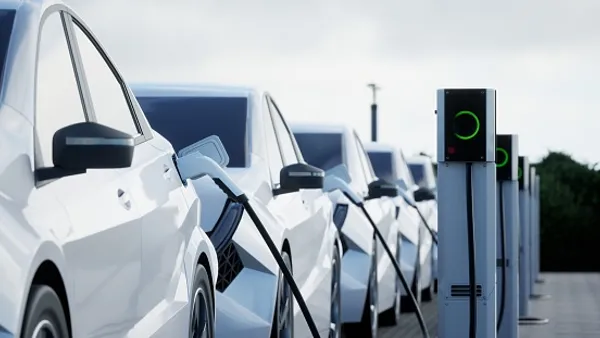Dive Brief:
-
A record number of microgrids were deployed in the U.S. in 2019, new research from Wood Mackenzie found — but the outlook for the next few years is bleaker due to disruptions caused by the COVID-19 pandemic
- Last year, 86% of installed microgrid capacity was powered by distributed fossil fuel generation, according to the report. But by 2025, the analysts estimate that solar, wind, hydropower and energy storage will power 35% of capacity installed per year.
-
"Usually, microgrids are a reliability play, not a clean energy play," Ken Wilson, engineering fellow with Western Resource Advocates, told Utility Dive. As a result, they often need to be coupled with a gas turbine or diesel generator. "So it's not surprising that a majority … of microgrids are actually fossil fuel-driven."
Dive Insight:
In total, 546 microgrids were deployed across the country last year, and two-thirds of them were installed by three organizations — PowerSecure, Enchanted Rock and The American Red Cross. At the same time, annual capacity in 2019 was actually reduced by 7% compared to the previous year, according to the report, because most of the microgrids were lower than 5 MW, reflecting a larger shift toward smaller systems.
"One of the trends we're really seeing is towards more modularity to speed up construction, development and also in some cases helping with financing portfolio projects," Isaac Maze-Rothstein, a research analyst with Wood Mackenzie and author of the report, told Utility Dive. "What we're seeing is smaller, more modular microgrids."
Customers tend to be interested in three core attributes of microgrids: resiliency, economics and sustainability, he said. In terms of resiliency, "it's not that there has been one major power outage and then someone gets a microgrid — it's when there's a perception that a grid becomes unreliable, or there's going to be extreme weather events," like hurricanes in Florida or California's wildfire-related safety shut-offs.
Historically speaking, a big chunk of microgrid development was focused on technology neutral, customized solutions for customers like hospital campuses, universities and military bases, Maze-Rothstein noted. On the other hand, a central theme he identifies with the three organizations that handled the bulk of projects last year is finding a niche, and offering modular, deployable systems that don't require a lot of customization from site to site.
Although 2019 was a record year, the first six months of 2020 were the slowest start to the year in terms of microgrid development since 2016. The outlook for the industry through 2025 is more conservative because of the pandemic. In some cases, this is because customers who were interested in microgrids are more uncertain about making large investments or potentially modifying a facility amid the pandemic, according to Maze-Rothstein.
He has also heard feedback of permitting being delayed because local governments have either slowed their processes or temporarily shut down their offices, as well as delays around interconnection and physically getting people to sites.
"Starting in the second half of 2022, we expect to see the challenges of originating new deals during 2020 impacting capacity additions through 2024," Maze-Rothstein stated in a press release.
Although distributed fossil fuels accounted for a majority of microgrid capacity installed last year, Maze-Rothstein expects that the share of renewables and storage will increase over the next five years.
"Some of the trends that have been driving specifically storage for the last few years is just the radical cost declines we're seeing for storage systems," he said.
The cliff around the solar investment tax credit could also spur demand over the next two or three years, he added.
There are also geographic challenges associated with powering microgrids with renewable energy, according to Wilson. For instance, solar energy is limited during the winter months in some states and if a storm were to take out a power line, "you have to have gas or a diesel turbine to power the whole load during those months," he said















